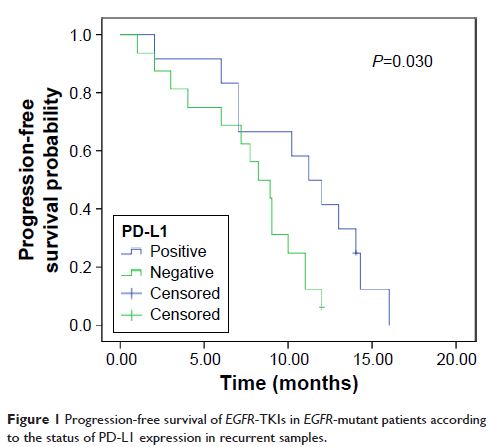100205
论文已发表
注册即可获取德孚的最新动态
IF 收录期刊
- 3.3 Breast Cancer (Dove Med Press)
- 3.4 Clin Epidemiol
- 2.5 Cancer Manag Res
- 2.9 Infect Drug Resist
- 3.5 Clin Interv Aging
- 4.7 Drug Des Dev Ther
- 2.7 Int J Chronic Obstr
- 6.6 Int J Nanomed
- 2.5 Int J Women's Health
- 2.5 Neuropsych Dis Treat
- 2.7 OncoTargets Ther
- 2.0 Patient Prefer Adher
- 2.3 Ther Clin Risk Manag
- 2.5 J Pain Res
- 2.8 Diabet Metab Synd Ob
- 2.8 Psychol Res Behav Ma
- 3.0 Nat Sci Sleep
- 1.8 Pharmgenomics Pers Med
- 2.7 Risk Manag Healthc Policy
- 4.2 J Inflamm Res
- 2.1 Int J Gen Med
- 4.2 J Hepatocell Carcinoma
- 3.7 J Asthma Allergy
- 1.9 Clin Cosmet Investig Dermatol
- 2.7 J Multidiscip Healthc

肺癌患者切除手术后复发时程序性死亡配体 1 的状态改变
Authors Chen J, Li H, Pang RL, Huang J
Received 12 November 2016
Accepted for publication 23 January 2017
Published 6 April 2017 Volume 2017:10 Pages 2003—2007
DOI https://doi.org/10.2147/OTT.S127498
Checked for plagiarism Yes
Review by Single-blind
Peer reviewers approved by Dr Manfred Beleut
Peer reviewer comments 3
Editor who approved publication: Dr Tohru Yamada
Purpose: Programmed death-ligand 1 (PD-L1) is found to be overexpressed in
non-small cell lung cancer. The present study intended to evaluate the status
of PD-L1 expression in patients with resection and recurrent lung
adenocarcinoma.
Patients and methods: Matched resection and recurrent tumor samples were
harvested from 65 lung adenocarcinoma patients. Immunohistochemistry was used
to evaluate the status of PD-L1 expression. Kaplan–Meier method was used for
survival analysis.
Results: A total of 65 patients of lung adenocarcinoma were
enrolled. They underwent complete resection and had recurrence after adjuvant
treatment. PD-L1 expression was identified in 43.1% (28/65) of resection
samples vs 55.4% (36/65) of recurrent samples. Ten patients shifted from
negative to positive, whereas another two samples showed the opposite. Patients
with PD-L1 expression showed worse disease-free survival than the
PD-L1-negative counterparts. The expression of PD-L1 in recurrent samples was a
significant favorable factor for epidermal growth factor receptor tyrosine
kinase inhibitors (EGFR -TKIs) (11.2 vs
8.2 months, P =0.030).
Conclusion: The status of PD-L1 expression may alter between
resection and recurrent samples. Also, the status of PD-L1 expression after recurrence
is a better prognostic factor for EGFR -TKIs.
Keywords: programmed death-ligand 1,
overexpression, lung adenocarcinoma, survival
